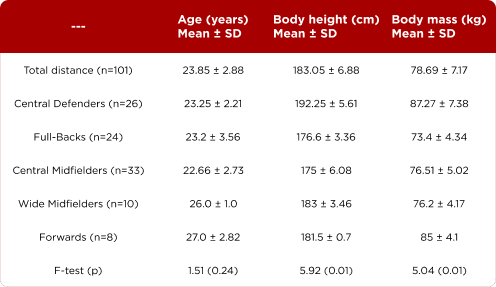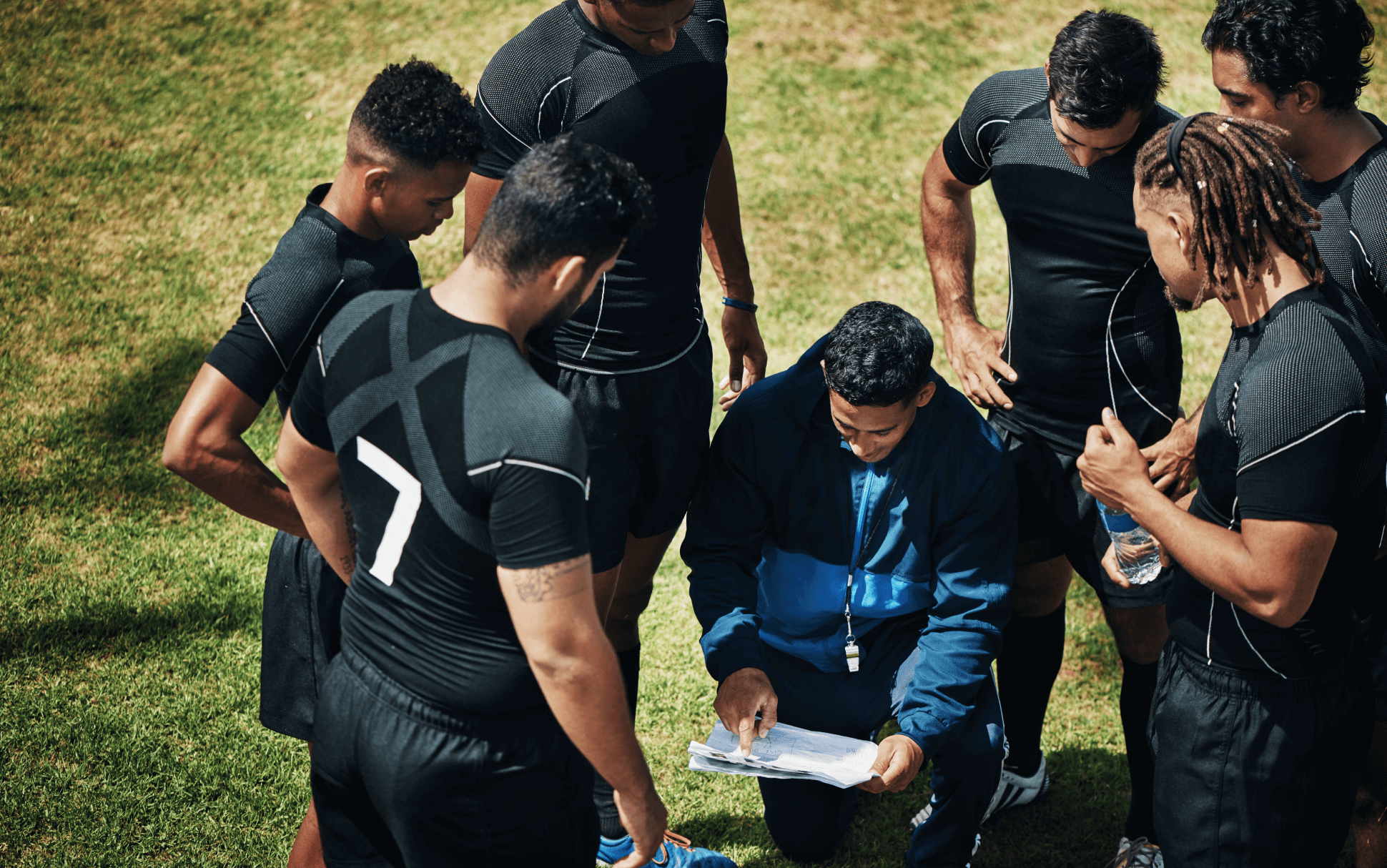Insights from Modrić et al. (2019)
Introducción
Soccer is a complex, dynamic sport that requires a combination of technical skill, tactical awareness, and physical performance. Each position on the field imposes unique demands, from central defenders reacting rapidly to offensive transitions to wide midfielders covering long distances at high speeds. Over the past decade, the development of Global positioning systems (GPS technology) has revolutionized performance analysis by providing objective insights into the running patterns and intensities that define elite play.
However, while external load data, such as total distance or sprint counts, are now standard in elite monitoring systems, the actual relationship between these running performance (RP) metrics and game performance indicators (GPI) remains less clear. Modrić et al. (2019) addressed this gap with a analysis of professional Croatian football players, bridging the physical and tactical domains through the integration of GPS data and the InStat Index, a position-specific measure of match performance.
Study Design and Methodology
The study included 101 match performances in Croatia’s First Division during the 2018/2019 season. The players were divided into five positions:
- Central Defenders (CD; n = 26)
- Full-Backs (FB; n = 24)
- Central Midfielders (CM; n = 33)
- Wide Midfielders (WM; n = 10)
- Forwards (FW; n = 8)

GPS devices (Catapult S5, 10 Hz) captured external load variables:
- Total distance covered
- Distances in five speed zones: walking (<7.1 km/h), jogging (7.2–14.3 km/h), running (14.4–19.7 km/h), high-speed running (19.8–25.1 km/h), and sprinting (>25.2 km/h)
- Accelerations and decelerations (total and high-intensity, defined as >3 m/s² and <–3 m/s², respectively)
Meanwhile, game performance indicators (GPI) were derived from the InStat Index, a platform integrating technical-tactical data (passes, dribbles, tackles, aerial duels, finishing actions, etc.) that varies by position. For example:
- CDs: tackles, aerial duels, interceptions
- FBs: pressing, crosses, passes into the penalty area
- CMs: playmaking, key passes, finishing
- WMs: pressing, dribbling, counterattacks
- FWs: shooting, finishing, pressing
To ensure statistical robustness, the study used ANOVA for between-position comparisons and Pearson’s correlation to assess associations between GPS and InStat variables.
Key Findings
1. Positional Differences in Running Performance
The study revealed significant positional differences (p < 0.05) across nearly all physical performance metrics.
- Central Midfielders (CM) covered the greatest total distance (≈11,155 m), followed by wide and full-backs.
- Central Defenders (CD) had the lowest total distance (~9,313 m) but showed the highest number of accelerations and decelerations, reflecting their reactive defensive duties.
- Wide Midfielders (WM) recorded the greatest high-speed running and sprinting distances, consistent with wide play demands in modern football
ijerph-16-04032-v3
.
Croatian First Division players displayed similar total distances to those in elite European leagues (England, Spain, Germany), yet the intensity of effort was notably lower, only 6.4% of their total distance was covered at high intensity, compared to 10% in top-tier leagues.

2. Correlations Between Running and Game Performance Indicators
The analysis found several position-dependent correlations between running performance and match efficacy:
- Central Defenders:
Running distance in the 14.4–19.7 km/h zone (r = 0.42, p = 0.03) and high-intensity accelerations (r = 0.49, p = 0.01) were both positively correlated with InStat index. This suggests that rapid acceleration and active positioning, essential for pressing and intercepting , strongly influence defenders’ game impact.
- Full-Backs:
Number of decelerations showed a negative correlation with InStat (r = –0.43, p = 0.04). High braking frequency likely reduces their attacking involvement (crosses, forward presses), showing that efficiency — not just effort , drives success for FBs
- Forwards:
Sprinting distance strongly correlated with match performance (r = 0.80, p = 0.02). Given that nearly every sprint represents a scoring or pressing opportunity, this aligns with the decisive value of high-intensity output in attacking play.
Interestingly, for midfielders (CM, WM), there were no significant correlations between GPS metrics and the InStat index implying their success depends more on technical-tactical efficiency (passes, dribbles, key actions) rather than physical outputs alone.

Debate
Modrić et al. emphasize that soccer success is multifactorial and context-dependent. While running performance contributes to match success, its influence varies by positional role. The findings support the concept of functional running , where the quality y timing of movement outweigh sheer volume.
For defenders, frequent high-velocity accelerations reflect aggressive defensive engagements, improving match outcomes. Forwards benefit from well-timed sprints, directly tied to goal-scoring situations. Meanwhile, midfielders’ performance is more tactical, demanding spatial awareness and technical precision over raw physical output.
The authors also note that Croatian league players, though physically capable, operate at lower high-intensity thresholds compared to their European counterparts.
Based on the findings of Modrić et al. (2019), several applied recommendations can be made for practitioners :
- Positional differences: Clear, statistically significant differences in total distance, high-speed running, sprinting, accelerations, and decelerations.
- Position-specific correlations:
- Forwards – sprinting distance strongly correlated with InStat index (r = 0.80).
- Central defenders – accelerations and moderate-intensity distance correlated positively with InStat index.
- Full-backs – decelerations negatively correlated with InStat index.
“Success in soccer is multi-dimensional and depends on physical, technical, and tactical factors that differ between playing positions.”
(Modrić et al., 2019, p. 8)
Future Directions and Reflections
It’s important to note that this study was published in 2019, using data from the 2018/2019 Croatian First Division season. In football terms, that’s already several tactical and physical “generations” ago. The evolution of match tempo, pressing intensity, and sprint demands across top European leagues over the past seven years has been significant research in the Premier League, Bundesliga, and UEFA Champions League consistently reports increases in high-intensity running and sprinting distances per match, as well as greater frequency of accelerations and decelerations within short intervals.
Given those global trends, it would now be extremely valuable to replicate the Modrić et al. (2019) study within the current Croatian football context. Such a follow-up would show whether domestic performance patterns have evolved in line with the international trend or whether differences have widened.
If the same league today still exhibits lower relative proportions of high-intensity activity (as Modrić et al. originally found), it might reflect persistent differences in tactical tempo, player conditioning, or match style. On the other hand, if high-intensity metrics have increased, that would signal meaningful progress in physical preparation, training methodologies, and game evolution.
Ultimately, repeating this kind of research now would not only serve as a benchmark for league development, but also as a feedback loop for academy programs, physical preparation strategies, and recruitment standards across clubs. It would allow practitioners to quantify the progress that has been intuitively observed on the pitch, and to identify areas where the domestic game still lags behind Europe’s elite competitions.
Referencias
Modrić, T., Veršić, Š., Sekulić, D., & Lipošek, S. (2019). Analysis of the Association Between Running Performance and Game Performance Indicators in Professional Soccer Players. International Journal of Environmental Research and Public Health, 16(21), 4032. https://doi.org/10.3390/ijerph16204032






